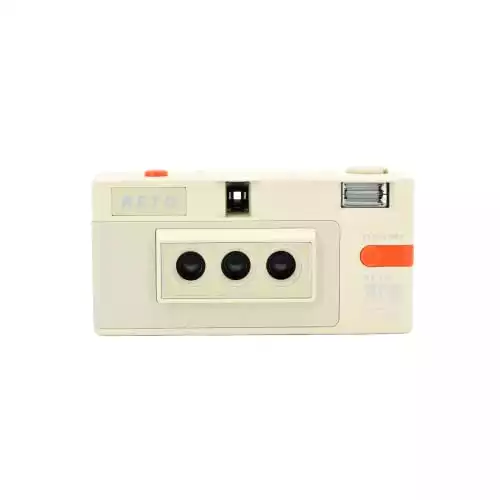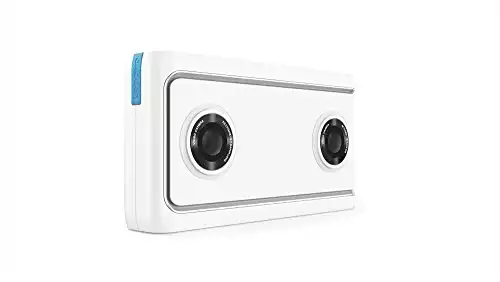3D cameras revolutionize how we record ourselves and change how we record with drones. With more depth than ever and hyper-accurate 3D recordings now possible, here are my top recommendations for the best 3D cameras:
If you’re on a budget and want a fun, easy-to-use 3D camera to create snappy personal videos, then the capable RETO3D is a solid pick.
For professionals that want quality above all, then nothing beats the Trisio Lite 2, especially for those in real estate.
And for a balance between quality and price, the top contender for overall best 3D camera goes to the Kandao QooCam EGO 3D, one of the most compact but versatile options out there.
| Name | Type of 3D Camera | Where to buy (with link) |
|---|---|---|
| KanDao QooCam EGO 3D | Stereo 3D Camera | Amazon Here |
| Trisio Lite 2 | 360 degree 3D camera | Amazon Here |
| RETO3D | 3D Film Camera | Amazon here |
| Fujifilm FinePix Real 3D W3 | Stereo 3D Camera | Amazon here |
| Lenovo Mirage with Daydream | 180 degree 3D camera | Amazon here |
| Nishika N8000 | Analog Stereo Camera | Amazon here |
| Intel RealSense D435 | 3D depth sensor camera | Amazon here |
| MYNT EYE | 3D depth sensor camera | Amazon here |
| Vuze XR | 3D and 360 Camera | Amazon here |
| Vuze Plus 3D 360 | VR, 3D and 360 Camera | Amazon here |
| Insta360 ONE X | 3D and 360 Camera | Amazon here |
| Insta360 ONE R | 3D and 360 Camera | Amazon here |
| Kandao Qoocam | 3D VR and 360 camera | Amazon here |
3DSourced Top Picks for 3D Cameras in 2024
1. KanDao QooCam EGO 3D — Best 3D Camera Overall
Despite its toy-like design, the KanDao QooCam EGO delivers ultra-realistic 3D experiences as a standalone point-and-shoot camera – an outlier in the 3D camera space.
- 4K 60 FPS capture
- Waterproof
- Attached magnetic viewer to sample captured footage
- Image stabilization
- Night time capture
Two lenses, positioned to match the distance between the human eyes, work in tandem to capture video at up to 3840×1080 60 FPS and side by side images at up to 8000×3000 pixels (12 MP per lens). Alongside, an optical correction algorithm and stereoscopic depth with a 66° (H) 52° (V) / 79° (D) FOV replicates the way humans see to offer truly-to-life immersive results suitable for VR experiences, vlogging, and selfies.
Impressive results aside, the KanDao QooCam EGO is waterproof and features 6-axis gyroscopic stabilization technology, removing the need for a gimbal, ideal for capturing crisp, fast moving action or on the move filming. You can also visualize your footage on the fly thanks to a magnetic viewer that latches onto the camera. At 275 grams with the visualizer or a feathery 160 g alone and with 94 mm x 52.8 mm x 22 mm dimensions, the camera is really designed as an action camera that fits in your pocket.

There’s also a 2.54″ touchscreen that’s among the easiest to navigate we’ve come across. KanDao has also thrown in Wi-Fi 5 connectivity for fast transfer to either the accompanying app or other editing software. From the camera itself you can snap, view, edit, and share images and 3D capture in a few simple steps so you won’t need a full editing suite to get high quality 3D content ready for viewing.
The only area where the KanDao QooCam EGO tails off slightly is night time capture. The results are dark with a noticeable loss of sharpness, often unsuitable for use in VR projects.

2. Trisio Lite 2 – Best For Real Estate
- 8K, 32 MP capture
- 360 degrees panaromic images
- Mark-free stitching
- No video capture
- Only suitable for room or virtual tour applications
The Trisio Lite 2 is designed from the ground up to produce highly-detailed 360 degree images and virtual tours suitable for fields such as real estate, construction, short-term rentals, architecture, and exhibitions.
Armed with a aspheric 32 MP lens, it combines together four images (90 degrees each) to create ultra- sharp 8K 360 still images, improved and refined thanks to HDR wizardry and Trisio’s anyScene Technology, which adapts to different lighting conditions for balanced exposure.

At 222 grams the Trisio Lite 2 lives up to its name, and comes with a tripod. The camera captures a space or room automatically once triggered, powered by a motor that swivels around the space you want to capture in roughly 30 seconds. From there, you can export stills via the companion app, ready for editing. It’s easy to use and the results speak for themselves – some of the most detailed and true-to-life stills of any 3D camera out there.
The Trisio Lite 2 focus on producing near pristine panoramic shots for professional applications comes with a major caveat – it can’t capture video at all. If you’re after a 360 degree action camera for VR or video content then you best off looking elsewhere. Its limited use case means that generalists or those working towards producing VR experiences are likely to find the capabilities of the Trisio Lite 2 too limited.
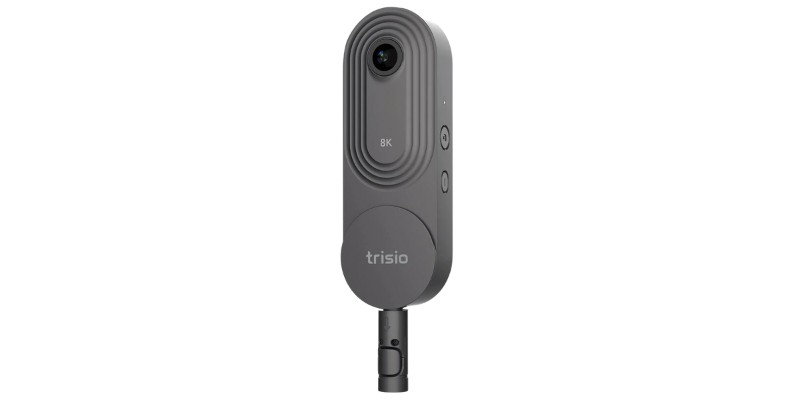
3. RETO3D – Best Budget 3D Camera
- Built-in flash suitable for dark environments and night time capture
- RETRO look and design
- Produces vintage-looking, dynamic 3D clips
- Not suited for professional applications
- Requires physical 35 mm film
Marketed as a tribute to similar vintage cameras from the 80s, the RETO3D takes 35 mm film and features three horizontally-aligned lenses to capture an object or scene from three 2D angles. These half-picture shots are then stitched together into 3D video.
The result is similar to Instagram’s boomerang (or wigglegrams), producing short, dynamic 3D GIFs ideal for sprucing up your personal social media handles or to share with family and friends.

Operationally, the RETO3D works like old film and disposable cameras – you need to load in film, wind the film, turn on the flash when required, and rewind the film once you reach the end of the roll. Once you’ve finished the roll it needs developing as would normal film (either in a dark room or through a developing service), then you can scan and import your images to the RETO app where the 3D magic happens.
In the app you can choose the focus of the image, adjust the order of the half-images, change the 3D effect speed, add in filters, crop the image, add a frame, and more to personalize the 3D clip. From there, you can share the 3D result as you see fit.
Compared to other 3D cameras, the RETO3D has limited uses and is geared towards consumers rather than professionals. It also limitations, chiefly that the best results are only attained when the cameras is close to the object or subject. However, at $100.00 and if you understand that it’s aimed at leisure use, then it’s easily one of the best and more fun budget 3D cameras on the market.
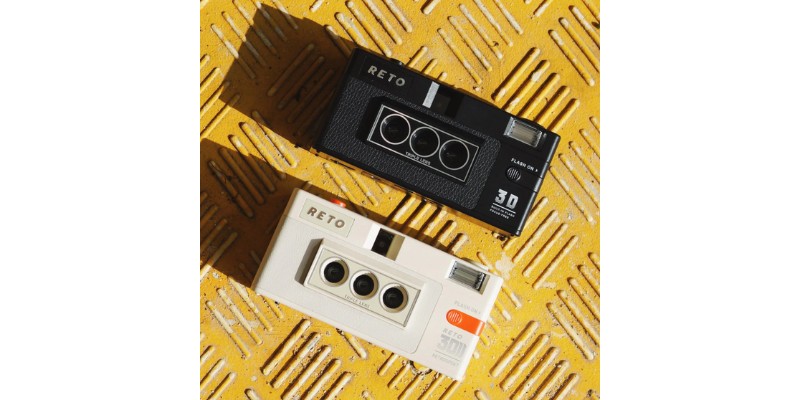
Best 3D Stereo Cameras
4. Fujifilm FinePix Real 3D W3
- Can capture both 2D and 3D photos and videos.
- Immersive 3D photographs with real depth.
- Easy to shoot 3D film.
- Better quality 3D cameras out there.
The Fujifilm FinePix Real 3D W3 is a modern remake of some of the original best 3D stereo cameras, and can capture both 2D and 3D photos and videos depending on which mode you have it set to.
The Fujifilm FinePix’s dual lenses and dual image sensors combine to create immersive 3D photographs with real depth. The two 10 megapixel sensors combine the image to create realistic 3D images with subject matter that you feel you can really touch.
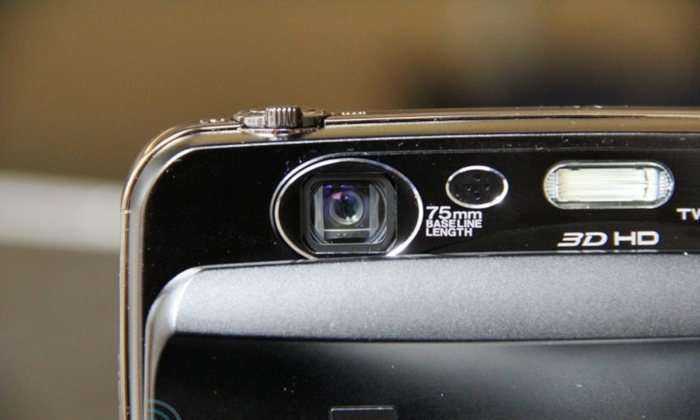
It’s easy to shoot 3D film, and then watch it at home by connecting it to your TV at home via HDMI. If you don’t want to hook it up to a TV you can still preview your 3D footage on the 3.5 inch LCD, 3D-enabled lenticular display – very rare for 3D cameras to include. The default settings are versatile and can be changed, with a variety of other custom settings included that account for natural light, portraits, landscapes, sports shots, night shooting, sunsets and even at parties.
Other key additions are the 3x optical zoom, as well as intelligent flash settings and anti-blue settings to ensure your 3D and 2D footage comes out looking crisp. The two 10 megapixel sensors are good, but for those looking for an extremely high quality 3D camera and for whom money is no object, this may not quite reach your standards.

5. Lenovo Mirage with Daydream 180 Degree 3D Camera
Super simple, sleekly designed and does what it says it’ll do, the Lenovo Mirage is a low cost 3D camera for livestreaming, recording video and taking 180-degree 3D photos.
Featuring two 180-degree lenses with 13 megapixel sensors, it’s affordable and with good quality recording. It takes both videos and photos, and is mainly sold on its ability to stream live instantly, as well as quick uploads to YouTube.
- Super simple, sleekly designed, and does what it says it'll do.
- Features two 180-degree lenses.
- Comes with Google apps so you can upload your images to Google Photos as well as live stream seamlessly on YouTube.
- No front camera to preview recordings.
It comes with Google’s apps so you can upload images to Google Photos as well as livestream seamlessly on YouTube. There’s no front camera to preview recordings, so you’ll need to download the VR180 app by Google to preview photos and video before uploading them anywhere.
It’s extremely simple, with just 3 modes: photos, videos and live broadcasting. It comes with built in WiFi for uploading, and for those looking for a cheap 3D camera and want to enjoy 180 degree 3D shots, it could be great for you.

6. Nishika N8000 Analog 35mm Lenticular 3D Camera
After Nimslo 3D stopped producing stereo Quadrascopic 3D cameras, several companies made effective clones that live on to the present day. The Nishika N8000 is the result of Nishika purchasing of some of the original patents from Nimslo 3D for these original stereo cameras, a rare analog 35mm film 3D camera for creating old-school 3D images.
- Does not require 3D glasses to view the 3D photos properly.
- Creates a delightful photo with great depth-of-field of great focus on every aspect of the photo.
- Creates old-school 3D images.
- Difficult to get the prints processed.
An advantage of these lenticular 3D photos is that you do not require 3D glasses to view them properly. They are difficult to get the prints processed, but are becoming more fashionable now as people are processing the film and either putting them together on Photoshop to form 3D photos, or turn them into animated GIFs.
The camera takes 4 photos from 4 different angles using the Quadra Lens System comprising 4 identical lenses, and when correctly combined create a delightful photo with great depth-of-field with great focus on every aspect of the photo. There are guides to create these 3D images on Photoshop, and arguably this adds a real satisfaction to your images.

Best 3D Depth Sensor Cameras
7. Intel RealSense Depth Camera D435 — 3D Depth Sensor for Drones and Robots
The 3 lenses – standard 2D camera, infrared camera and infrared laser projector – allow the RealSense D435 to tell distance between objects, separate objects from the background behind them, and offer very good gesture and facial recognition.
Not a 3D camera in the conventional, consumer sense, Intel’s RealSense range are wide view 3D cameras for sensing depth in robots, drones, and increasingly in cameras and 3D scanners.
- Can be integrated into solutions like tablets with ease.
- Calibrates within 15 seconds.
- Works in low lights.
- Not a 3D camera in the conventional, consumer sense.
The D435 3D depth camera can capture depths up to 10m, and the small size (90 x 25 x 25 mm) mean it can be integrated into solutions like tablets with ease. It is said to calibrate within 15 seconds and without the need for specialized targets to save you time and hassle, and records in 1920 x 1080 resolution at 30fps.
For amateur robot builders, this is one of the best 3D cameras for object recognition and avoidance for your robot or drone’s navigation. It works even in low lights – robots navigating using Intel RealSense camera 3D software can do so even with the lights off. As a Kinect successor for robotics, drones and many other applications, it’s extremely effective for the price. A RealSense 3D sensor is even in the 3D Systems Sense 3D scanner.

8. MYNT EYE 3D Stereo Camera Depth Sensor
Not to be confused with MYNT3D who make 3D pens, the MYNT EYE 3D stereo camera depth sensor is similar to Intel’s RealSense, offering a wide field of view (140 degrees) and also optimized for low light conditions.
- Offers a wide field of view and is optimized for low-light conditions.
- Accurate depth sensing.
- Small and portable.
- Instructions to set up can be difficult for beginners.
With accurate depth sensing between 0.5 and 20 meters, it’s effective at longer ranges than the Intel RealSense. It offers 60fps at 752×480 resolutions, and similarly to the RealSense is very small and portable, so it can easily be integrated to robots sensing where to travel, drones moving around objects in the air, as well as in logistics and warehouses.
MYNT EYE themselves put it very eloquently when they say that the 3D stereo camera works to “allow computers to see the world as we do.” If you’re looking for a 3D camera for your robot, drone or other useful function, it’s another good option.

3D Cameras and 360 Cameras
9. Vuze XR – Great For VR
The Vuze XR can operate in both 2D and 3D, capturing full 360 degree photos and videos in 2D, and 180 degree half-spherical photos and videos in 3D.
- Operates in both 2D and 3D.
- Captures at up to 5.7K quality, at 30 fps.
- Very lightweight.
- Battery life isn't very good.
A high quality 3D camera, the Vuze XR captures at up to 5.7K quality, at 30fps, and shoots stills at 18 megapixels. Your footage can be easily edited in Vuze VR Studio software, that comes with the camera, before rendering either the 360 or 180 video. It also comes with the Vuze XR app allowing you to operate the camera remotely.
Another advantage is this lightweight 3D camera weighs just 213 grams, so it won’t strain your arm trying to record for long periods of time.

10. Vuze 360 Plus 3D VR Camera — Best For Travel and Action Shots
The Vuze 360 Plus lets you capture both videos and photos in 3D and in 360 degrees for VR. Featuring 8 lenses arranged in pairs to capture stereoscopic 3D 360-degree footage, each recording in 4K, as well as 360 audio capture, you are assured of immersive and enticing footage that will feel like you are really there.
- Lets you capture both videos and photos in 3D and in 360 degrees for VR.
- Can broadcast live if you ever want to show your friends or customers what you're up to.
- Record in 4K with audio capture.
- The software can be buggy and slow.
As well as immersive 360 degree and 3D video, the Vuze Plus 3D can take 14.7 megapixel stills, with a versatile range of 100-1600 ISO. It’s not too heavy, at just over 450 grams, and can broadcast live for if you ever want to show your friends or customers what you’re up to – perhaps a concert you are putting on, or a big ski jump.
The 3D and 360 camera comes with a case, a mini handle, mini VR glasses, USB cable, power adapter, cleaning cloth and rubber bumper.

11. Insta360 ONE X
The Insta360 ONE X is a 360-degree camera that shoots video in stunning 5.7K quality, as well as being able to take full 360 photo stills in 18 megapixel quality. At 5.7K quality it records video at 30fps, at 4K quality it can record at 50fps, and at 3K it can record at 100fps.
- Multiple resolution and fps options to choose to record from.
- Comes with FlowState stabilization which makes sure your footage comes out smoothly.
- Comes with a tripod handle and an invisible selfie stick.
- The ONE X only shoots 3D video in 360-degree mode and is not weather resistant.
The more expensive Insta360 3D camera and the bigger brother of the ONE R, the ONE X only shoots 3D video in 360-degree mode but can be changed to standard 180 degree video during editing if you only want to show a certain view. Added features allow you to slow down key moments, as well as speed up other parts within the app. Afterwards, you can easily transfer them to another device over WiFi.
Insta360 3D cameras also come with FlowState stabilization which makes sure your footages comes out smoothly, acting as a gimbal, smoothing out any sudden jerky movements and giving you crisper and more forgiving footage. It comes with a tripod handle and an invisible selfie stick that won’t show up in post-production, so you’ll be ready to go for capturing 360 videos, photos, and bullet time shots right away.
Unlike the ONE R, the ONE X is not as weather resistant. This is therefore less of an action camera, and more of a camera for recording daily life and business footage, such as the insides of houses for real estate listings, day-to-day vlogging, and other applications.

12. Insta360 One R – Great for Travel Shots
A versatile 3D and 360 degree camera, the Insta360 ONE R can turn from a purely 360 camera recording in striking 5.7K quality, to a wide angle shooter recording in 4K at 60fps.
- Versatile.
- Can record up to 5.7K, to a wide angle shooter recording in 4K at 60fps.
- Waterproof up to 5 depth of meters.
- Comes with many necessities for a kit.
- The screen is small and complicated.
Moreover, this action 3D camera is waterproof up to depths of 5 meters, so there is no fear for recording yourself enjoying the sun poolside, or in wet conditions. Like the ONE X, it has FlowState for minimizing blurring and reducing smudging to give you crisper footage, replicating a gimbal’s effects without using a gimbal.
If you buy the ONE X, you’ll get the camera, the 4K wide angle mod, dual lens 360 degree mod, battery base, lens cap, mounting bracket, and the invisible selfie stick. That’s quite the collection of kit. Overall, it is a great 360 3D camera for action shots, rainy or wet conditions, and crisp 3D footage.

13. Kandao QooCam 360 and 3D VR 180 Camera — Best For Social Media Content
The Kandao QooCam is another 3D camera with the option of recording full 360 degree video. Record either 3D 180-degree footage, or full immersive 360-degree photos and videos in 4K.
- Comes with the easy-to-use SmartClip app.
- Long battery life.
- Comes with an invisible selfie stick, and can also be controlled remotely.
- Low-light performance and resolution could be a bit better.
For beginners, the 3D camera comes with the easy to use SmartClip app, featuring video templates for editing and uploading to Facebook and other social media sites. You can easily share 3D photos to Facebook, where your friends and family can view your stunning image with Facebook’s 3D photo viewer. It also fully integrates with existing 3D viewers such as Oculus Go and Quest, HTC Vive and Samsung’s VR headset.
A key advantage of the Kandao QooCam is the long battery life – up to 3 hours. This is perfect for long days out where you may not have access to a charger, and don’t want to miss any chance to film. The camera comes with an invisible selfie stick, and can also be controlled remotely.

3D Cameras Buyer’s Guide
3D Cameras: A Very Short History
In fact, 3D cameras are not new developments. The original Stereo Camera tech was originally developed back in the 1940s, with the Stereo Realist 3D camera released in 1947 to much acclaim. Kodak released a competitor a couple of years after which sold well, with Nimslo 3D introducing the first real low cost consumer 3D camera shortly after.
Nimslo 3D no longer release 3D stereo cameras but clones using the same technology live on, such as the Nishika N8000 stereo camera which features on our best 3D camera review.
What is a Stereo / 3D Camera?
Stereo cameras, also known as 3D cameras, are imaging devices that use at least 2 lenses to record multiple points of view, or one lens that moves position to record the same object in multiple positions. Depth perception is created by combining these multiple perspectives from different points of view together into 3D photographs.
Current 3D stereo cameras include the Fujifilm FinePix Real 3D W3, which features on this best 3D camera ranking. It’s one of the best stereo cameras you can buy.
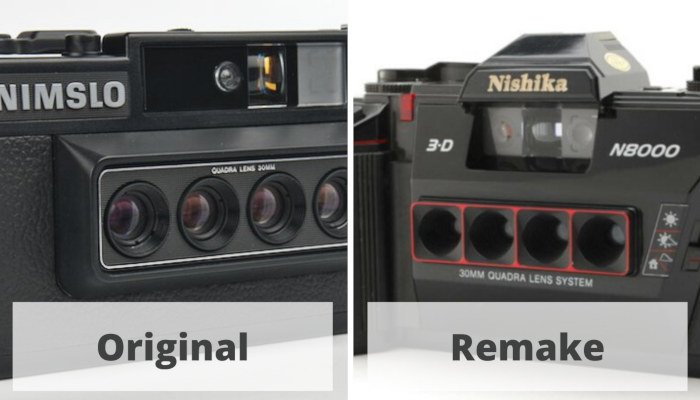
3D Photographs and Stereoscopy / Stereo Imaging
3D photographs can look so real that you feel like you can touch the people or mountains in the photo – and need to be viewed with 3D glasses. The principle behind this is stereo imaging, wherein different perspectives of an image – for example, captured by multiple lenses at the same time – are converted into one 3D image. This creates depth and gives it the 3D effect.
Difference Between a 3D Camera and a 360-degree Camera
The differences between a 3D camera and 360-degree camera are that 360 cameras immerse the viewer in the image, while 3D cameras are dedicated to bringing depth as seen by our eyes. 3D images are unidirectional – the final image is viewed by a single angle. 360 cameras capture video or images from every angle, so the image can be viewed more deeply.
Some new video cameras can take videos and photos in 180 degrees with VR immersive 3D effects, as well as take 360-degree video and photos for complete immersion at every angle. These cameras function as both 360 degree cameras and 3D cameras, and a few are included in this best 3D camera buyer’s guide. These are also different from 3D printer cameras, which are standard cameras used to record 3D printer time-lapses or check for when errors occur during printing.

3D Depth Sensor Cameras
3D cameras as a category have grown to also refer to 3D camera depth sensors, such as Intel’s RealSense cameras and Microsoft’s Kinect. These have extensive applications in robotics, drones, future cameras and logistics.
3D depth sensors that are coming on the latest smartphones use time-of-flight (ToF) 3D camera sensors to measure the distance to an object, sense the object, and calculate the volume and size of the object. This means new Samsung phones will be able to instantly calculate the size of an object you focus on using these new 3D depth sensors in cameras.
The first low-cost 3D depth sensor was Microsoft’s Kinect, which was as effective as many industrial-grade existing 3D camera sensors. As a result, the Kinect was used for robotics research by NASA, Disney, and many universities. Intel’s RealSense 3D sensors then one-upped the Kinect, with a range of small 3D cameras that can fit inside a tablet or large smartphone, and which have also been adopted in robotics and drones.

3D Depth Sensor Cameras as 3D Scanners
In fact, the 3D Systems Sense 3D scanner contains an Intel RealSense SR300 for short range scanning and depth sensing. The Kinect used to also be popular as a cheap 3D scanner if you went through the time and effort to convert it, as 3D cameras become closer and closer to 3D scanners.
One form of 3D scanning, photogrammetry, is very similar the way stereo cameras put together images. As cutting edge 3D depth sensor cameras become more mainstream, these will likely usher in the next generation of effective and low cost handheld 3D scanners that can quickly scan 3D models of real-life objects, for applications such as 3D printing.
3D Camera Applications & Uses
Realistic Gesture Capture
3D cameras can more effectively capture minute facial movements such as from your lips and mouth, cheeks and eyes to create far more realistic avatars and characters. An example would be a far more accurate and animated Snapchat avatar which mimics your exact mannerisms.
Additionally, research is ongoing by companies such as BMW for gestures to control accessories remotely, with Intel and Microsoft exploring how touchscreens and mouses and keyboards can be removed completely in favor of gesture controlling.
Volume Dimensioning
Depth sensing means that once in focus, an object’s size can be instantly determined. These features are already being used on Samsung phones like the S20+ and S20 Ultra for their Quick Measure feature, where an object can be measured in real-time on your screen.
Robotics and Drones
Using 3D cameras that measure depth, drones can avoid anything they may crash into and navigate safely and autonomously. Robots can do the same on ground, with extremely advanced 3D sensors being used on self-driving car prototypes.
Logistics and Warehouses
3D cameras and sensors allow for quick measuring of boxes, pallets and stock levels for instant data.
Medical Progress
In the event of a serious wound, the depth and size of the wound can be monitored to check for healing progress and track any developments.



